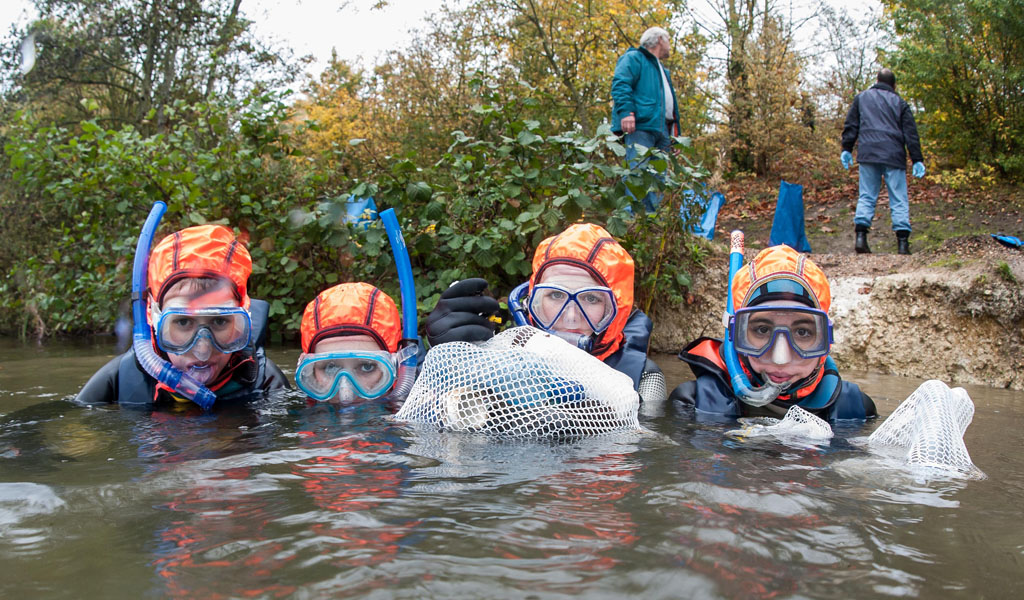
As snorkellers, we can help turn the tide on marine litter. All BSAC members are being encouraged to include Marine Cleans into their snorkelling trip plans as well as club and family get-togethers – on, in and around the water.
I doubt if anyone will have missed the media coverage on the epic Channel swim by Lewis Pugh and his comments about the jellyfish and plastic he has encountered. Hopefully you have also seen in the September issue of SCUBA magazine ‘Keeping it Clean’ an invitation to BSAC members to submit their photos of underwater and top side litter picks into the Marine Clean Photo competition. Entries can be submitted on line by 30 September 2018. Apex are sponsoring the prize and I am assured that should a Snorkelling group win they will not be disappointed. Marine and inland water clean ups are something I know snorkellers have done for years with great success. There are some safety issues to be considered in this environmentally friendly activity including behind the scenes careful planning, briefing and very active dive management
- Marg Baldwin, Snorkel Instructor Trainer
Check out the site
The obvious starting point for any in water activity is to check the site out. This will partly depend on the reasons for choosing a particular site. If it is one that is well known to your group, then the decision to do a litter pick is likely to be made on the basis that you know the site and have previously identified the amount and type of rubbish that needs collecting.
However, it could be suggested that you clean a site not so familiar to you. As with any snorkel location the first question should be...
- Can we get in and out for the water safely? The next consideration is...
- What the water conditions are like including the depth, temperature, bottom quality and the size of the area to be covered.
- Another major consideration is what the litter is made up of? This is likely to impact on both the methods used and any specialist procedures and equipment that may be necessary, for example lots of large litter items like bikes and shopping trolleys would be difficult to recover by snorkellers themselves and so could be better suited to the snorkellers attaching a rope for the shore party to haul in.
Safety measures
The first consideration is self-protection. Wearing high viz hoods to be easily seen at all times will be helpful; wearing gloves should be considered essential but normal diving gloves may not give adequate protection from sharp objects. Consider using more robust gloves intended to provide such protection.
Virtually any body of water will attract anglers at some point, lines and ropes can be a significant entanglement risk, so an appropriate cutting implement should be carried by everyone. If using equipment such as ropes, then to avoid a tangle a good communication system is essential.
With snorkelers the ability to collect large volumes and / or weight of litter without support is a potential safety issue. A full goody bag can quickly become unwieldy and extremely heavy, so you should plan to recover them frequently.
Keeping control
Having started to plan the above safety precautions it is most important that someone is in overall charge of the whole operation and is positioned to keep an overview of what is going on. This allows them to spot potential problems developing and make amendments to the procedures to keep the whole activity fun and safe.

 Author: Marg Baldwin | Posted 06 Sep 2018
Author: Marg Baldwin | Posted 06 Sep 2018


